Make a plan

Summary
Guide participants through an interactive session to learn systematic task planning methods in 20 minutes. This approach helps participants achieve better results and improve productivity.
“Become aware of your own thought patterns and have the courage to challenge and change them”
Introduction
Anxiety, inner conflict, and procrastination often become obstacles on our way forward. These problems not only reduce our efficiency, but may also prevent us from achieving our desired goals and lead to self-doubt. However, the key to getting out of this dilemma is to make a clear and feasible plan for yourself and follow it step by step. Through continuous action, we can improve efficiency, rebuild confidence, and ultimately gain self-recognition through progress and achievements.
Aim
In the next 20 minutes, I will teach you how to create an effective plan for the short term (daily/weekly) and long term (monthly/yearly ).
Prepare
Paper version:
- A4 paper or notebook
- Black pen or other colored pen


Electronic version
- Any mobile phone with built-in planning software (Take Apple mobile Phone as an example)
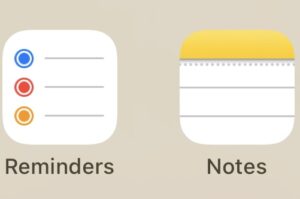
Mistake Plan
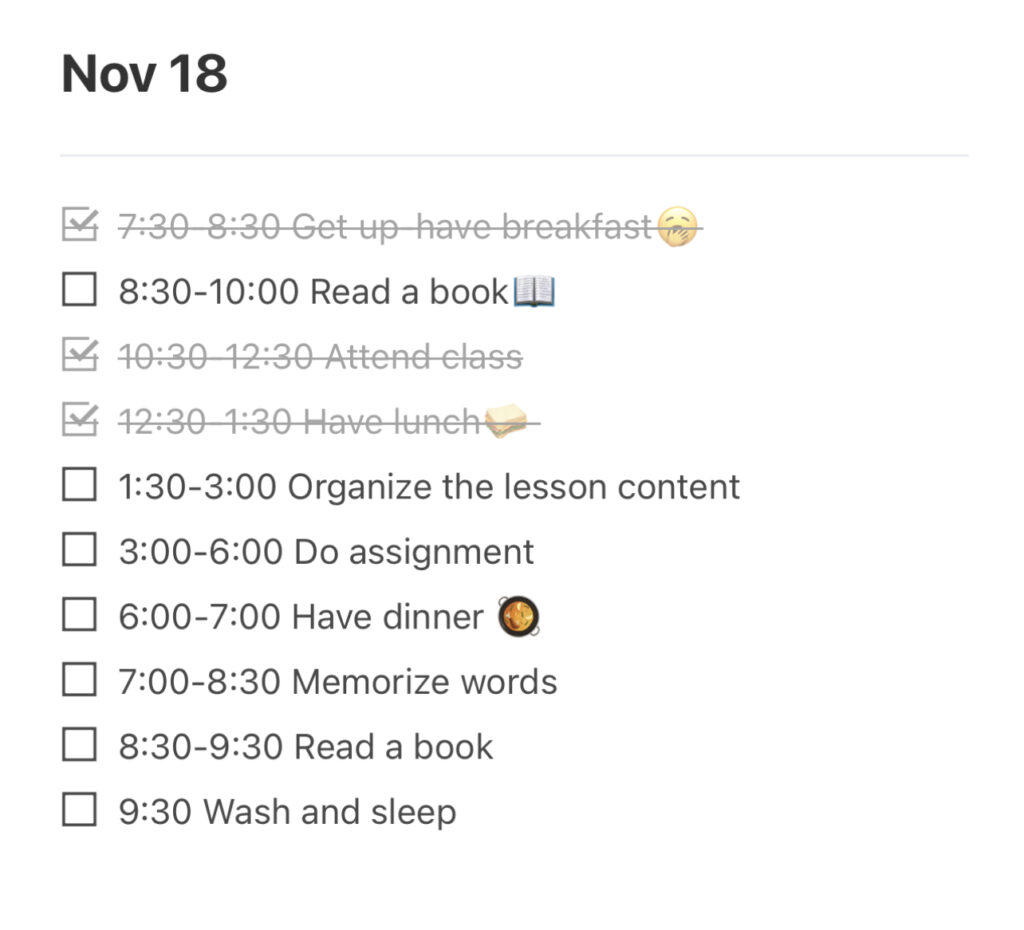
Mistake plan examle
- The time frame is too rigid (which will bring more pressure to yourself)
- Too tight a schedule (not taking into account the available time in the day)
- Not scheduling revision time (although reflecting on your plans for today can help you make better revisions)
- Lack of overall perspective (planning should be guided by the plan, rather than filling time with trivial matters)
How to plan correctly?
Step 1:
Calculate how much fixed non-disposable time and disposable time you have every day?
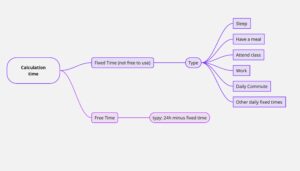
Time calculation method
The method of calculating the available time is: 24 hours minus the time that cannot be used freely.
Step 2:
Make a list of things you need to do every day/week/month ( four quadrant method )
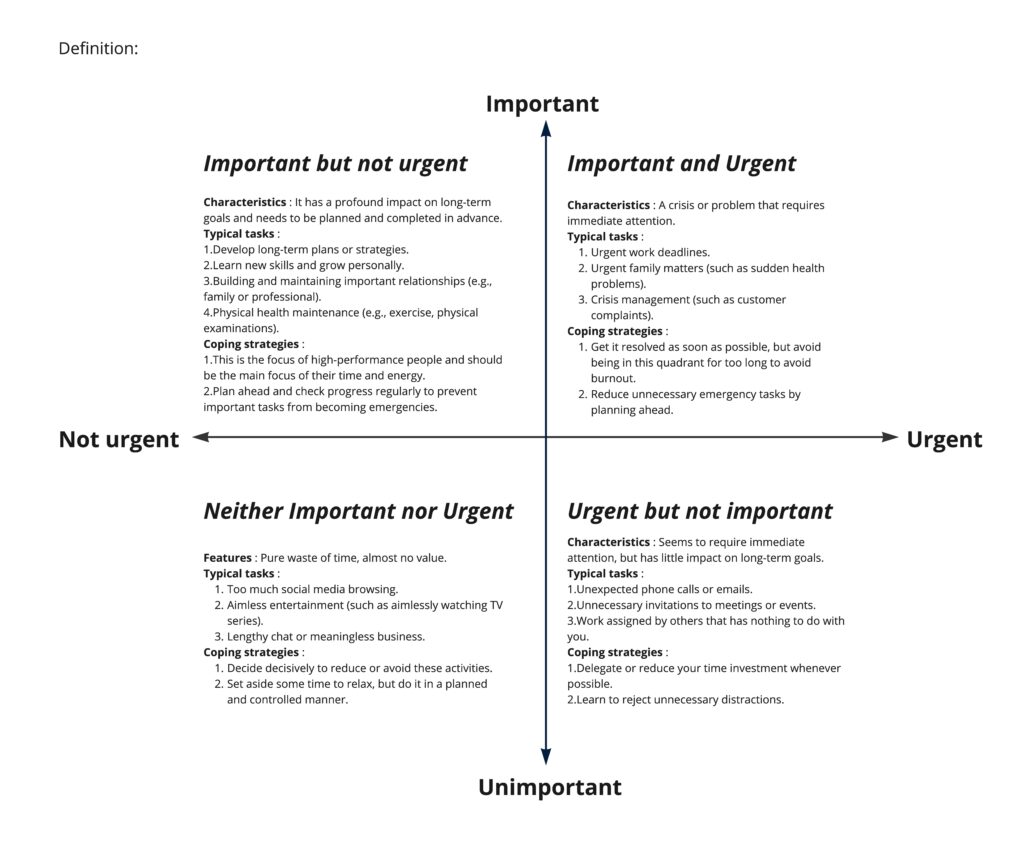
If you want to watch the video version please click the link below (0:39-4:20 of the lecture)
https://www.youtube.com/watch?v=Z459cW8C3i0
Note: The “Important/Urgent Matrix” (also known as the “Time Management Matrix”) proposed by Stephen Covey in “The Seven Habits of Highly Effective People” is a simple and practical tool that can help people prioritize tasks, thereby allocating time reasonably, improving efficiency, and focusing on long-term valuable things.
Step 3:
By ranking things in order of importance , you can estimate the approximate time required, and then sort and schedule your to-dos based on the time available each day/week/month. Using my own weekly schedule as an example.
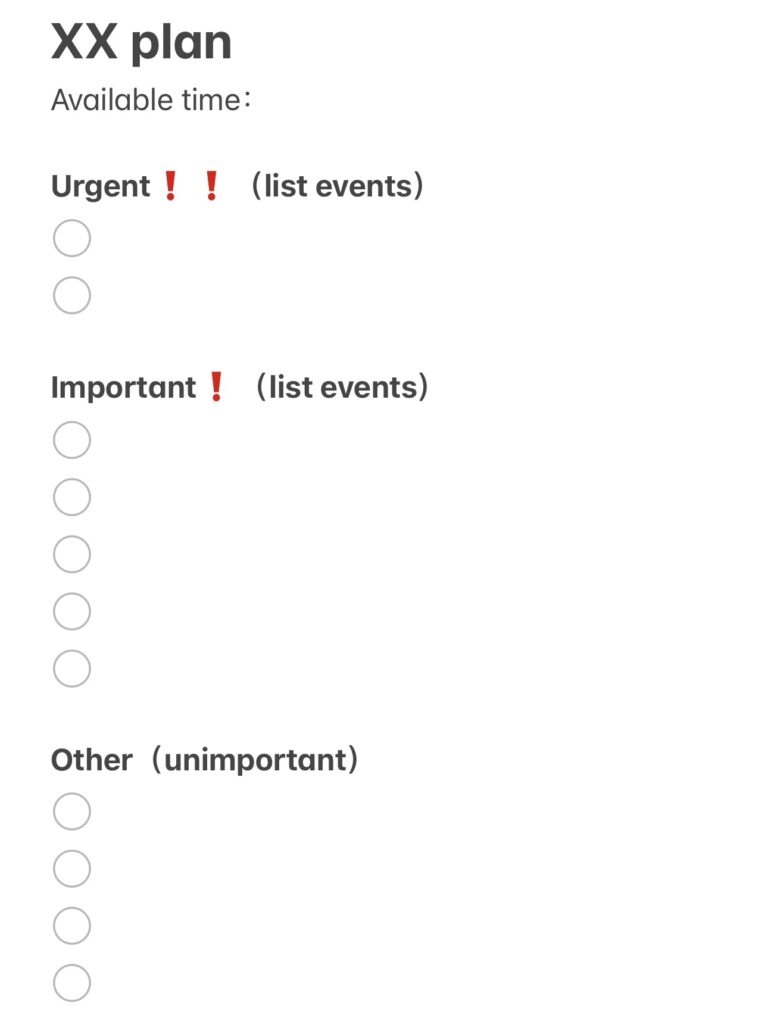
examples
You can use this template on your paper, or use it on your phone like I did. Try to reduce the number of urgent matters and put more energy and time on important but non-urgent matters.
Step 4:
Work hard, cross off one item as you complete it, and effectively review today’s to-do and unfinished lists to adjust your plans for next time!
Reflection and Summary
You can follow the steps above to create your own plan and execute it effectively. Once you are done, you can reflect effectively by asking the following questions .
- Does making a plan make me more aware of my goals and what I need to accomplish that day/week/month?
- Will following this schedule increase my motivation and reduce my anxiety?
- Am I happy with the plans I made or am I anxious?
Sample plan
In this section, I will follow the previous steps to demonstrate how to plan for a day. Participants can refer to this and make adjustments based on their own experience and plans.
Weekly plan example(for workers)
Step 1
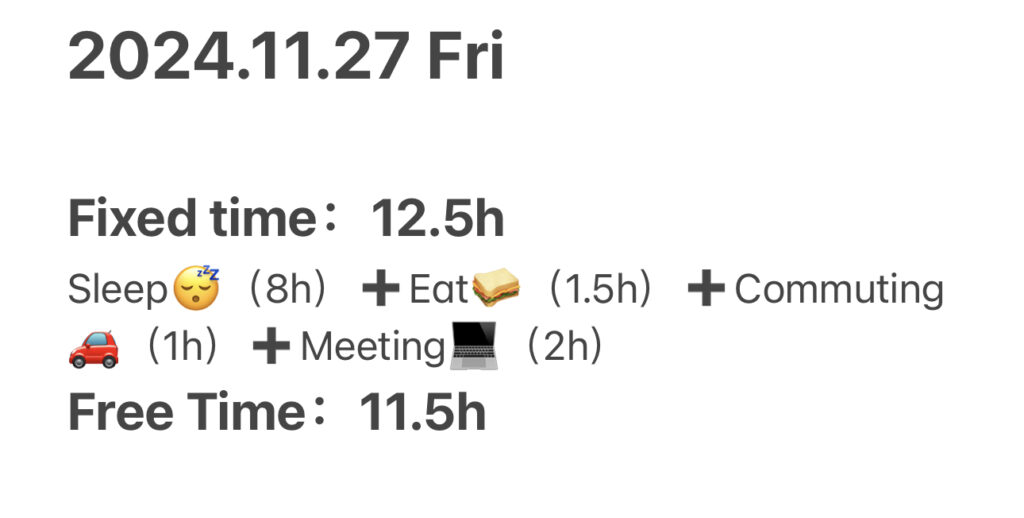
Example1
Step 2
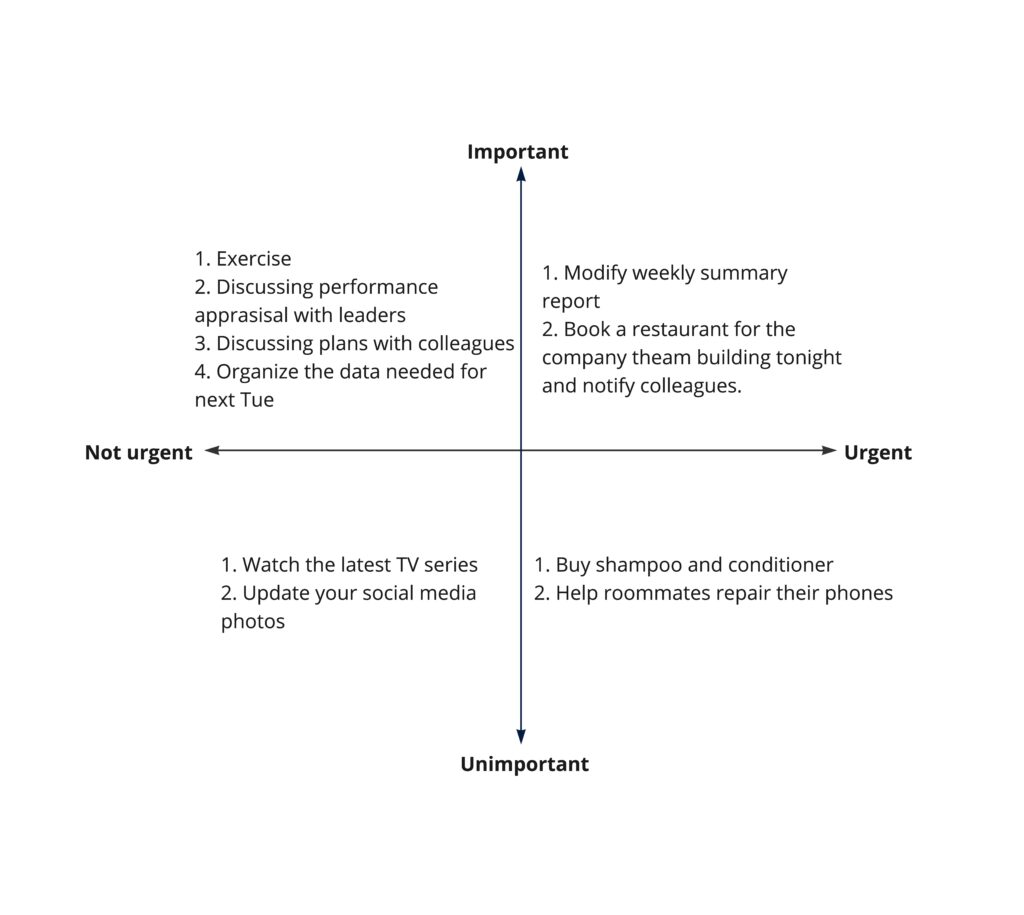
Example2
Step 3
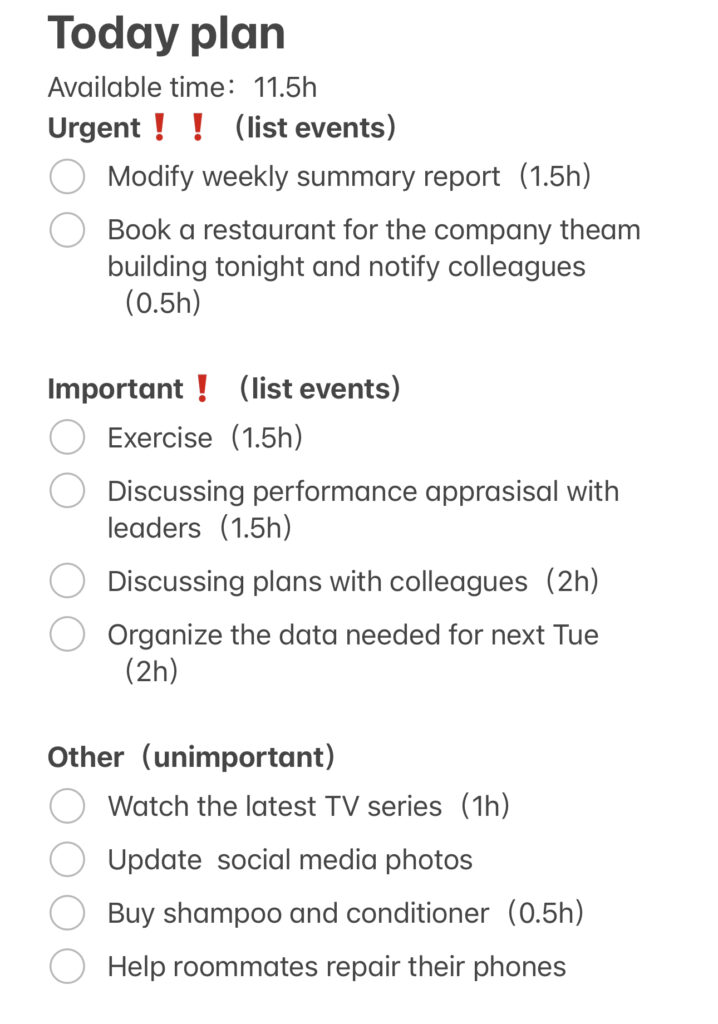
Example 3
Step 4
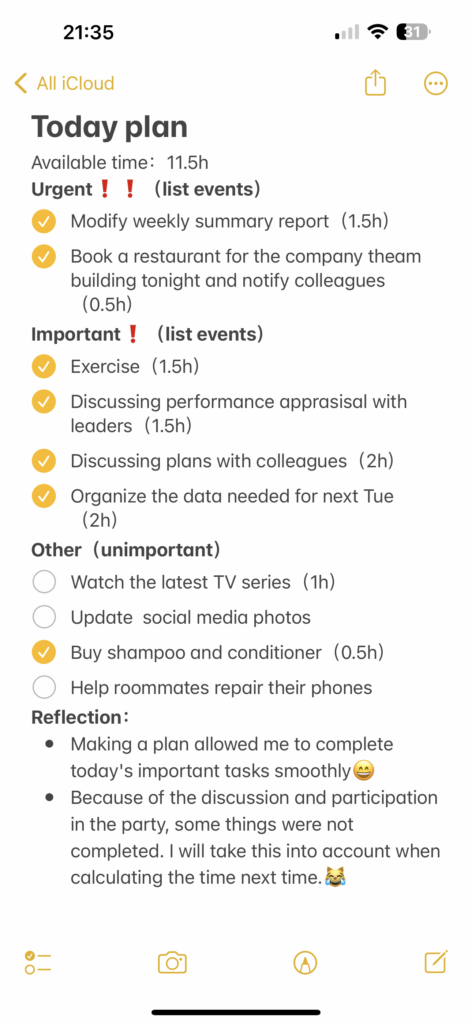
Example 4
Make a Plan © 2 by X Licensed under a Creative Commons Attribution-ShareAlike 4.0 International
Done is better than perfect© 2 by Mr.Bubbles is licensed under CC BY-NC-ND 4.0
four quadrant method © 2024 by Xi sun is licensed under CC BY-NC-ND 4.0
(This work © 2 by Mr.Bubbles is licensed under CC BY-NC-ND 4.0 )
(This work © 2 by Mr.Bubbles is licensed under CC BY-NC-ND 4.0 )


